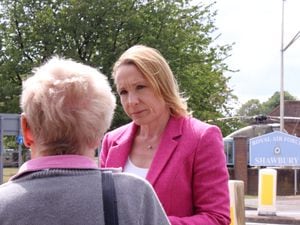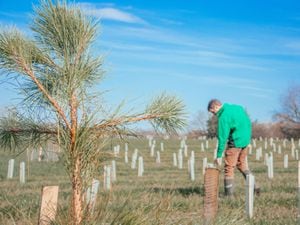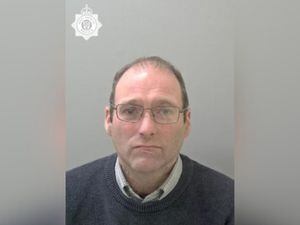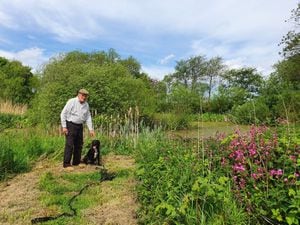Shropshire Remembrance parades 2016: Where to pay your respects
Thousands of people across Shropshire will turn out to remember the fallen at a series of parades across the county.
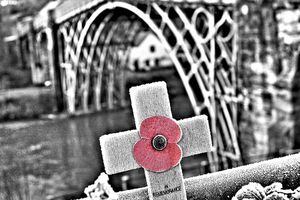
In years gone by, the older generation who served in the first and second world wars would have taken centre stage in these events.
But as the Royal British Legion increasingly turns its attentions to the young men and women who have served in recent conflicts such as those in Iraq and Afghanistan, the charity is asking us to rethink Remembrance this year.
The fallen from two world wars will never be forgotten.
But Jenny Robey, the Royal British Legion's community fundraiser in Shropshire, says today's Remembrance events are also about paying tribute to those who have served in recent conflicts.
"A lot of the work that the Royal British Legion does today is with some quite young people who have served in recent conflicts and are affected now and who need help now," says the 31-year-old from Shrewsbury.
"It is not just about wars which happened a long time ago."
Councillor Paul Watling, of Telford & Wrekin Council adds: "During the Poppy Appeal this year we're asking people to widen their lens when they reflect on Remembrance.
"The Legion is here for all generations of the armed forces community, and it's important to remember there's a new generation that needs your support.
"When you pin your poppy on, or pause to remember, reconsider who you think of when you picture a veteran.
"Individuals and families from across the armed forces community need the Legion's support, as well as our older veterans.
"Every donation received will make a real difference to the lives of service men and women, veterans and their loved ones."
The fundraising target in Shropshire is £470,000, which will go towards the Legion's national target of £43 million to continue its vital work delivering practical, through life care and support to the Armed Forces community.
On Friday, Ludlow will mark Armistice Day with a short service at the memorial in Castle Square.
On Sunday, Remembrance parades will be held across the county. In Oswestry Bailey Head, The Bailey, The Cross and Church Street will all be closed as the parade makes its way towards St Oswald's Church.
Traditional Remembrance parades will be held across Shropshire on Sunday morning, observing the two minute's silence at 11am.
Shrewsbury's parade will make its way through Castle Street, Pride Hill, Mardol Head, Shoplatch, St John's Hill before arriving at St Chad's Church where a service will be held.
Bridgnorth's parade will make its way through West Castle Street, Postern Gate and High Street, and there will also be parades through Bishop's Castle, St Martins, Albrighton, Whitchurch, Baschurch, Cleobury Mortimer and Wem.
There will be a wreath-laying ceremony in Chirk Road, Gobowen, while the Market Drayton parade will make its way from Queen Street to St Mary's Church where a service will be held.
In Shifnal, the parade will start at 10.30am from the War Memorial Club at Five Ways roundabout, and move towards St Andrew's Church where a service will be held from 10.55am.
Telford & Wrekin Council has joined forces with the Royal British Legion and Telford Christians Together for its Remembrance Sunday festival at Oakengates Theatre.
There will be a parade of standards and one hundred names will be read from the Roll of Honour.
The RAF Museum at Cosford will also be holding a Remembrance Sunday service led by station chaplain Sqn Ldr the Rev Andrew Chapman.
Those attending will also be treated to renditions from the Cosford Military Wives Choir, who will perform for visitors on arrival and during the service.
The service will take place in the museum's Hangar 1 and visitors are asked to assemble no later than 10:30am ready for the service to start at 10.45am.
Poppies stem from war poet
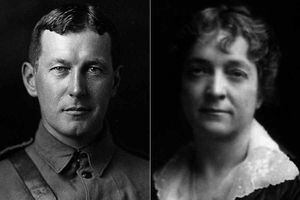
One hundred years ago, the flower of Britain's youth was being scythed down as the bloody Battle of the Somme was at last drawing to a close.
The scale of the loss during the Great War prompted a determination to remember for all time the sacrifice of the fallen.
Today the symbol of remembrance is the poppy.
It is more than a symbol, as the Poppy Appeal every November is the biggest fundraising campaign by the Royal British Legion funding its work supporting serving and past members of the armed forces, and their families.
But why the poppy?
There are two people we have to thank – one of them a Canadian soldier and a doctor who served in the trenches and wrote a poem evoking the image of poppies growing between the crosses, and the other an American humanitarian who was inspired by the poem and popularised the wearing of the poppy in memory of the fallen.
John McCrae was a field surgeon in the Canadian Artillery, and was in charge of a field hospital at Ypres in the spring of 1915.
Following the death of a close friend, he wrote In Flanders' Fields.
In Flanders' fields the poppies blow
Between the crosses, row on row,
That mark our place: and in the sky
The larks, still bravely singing, fly
Scarce heard amid the guns below.
We are the dead. Short days ago
We lived, felt dawn, saw sunset glow,
Loved and were loved, and now we lie
In Flanders' fields.
Take up our quarrel with the foe;
To you from failing hands we throw
The torch; be yours to hold it high,
If ye break faith with us who die
We shall not sleep, though poppies grow
In Flanders' fields.
The poem was rejected by The Spectator but was published anonymously in Punch in December 1915.
McCrae, who rose to the rank of Colonel, was not to survive the war. He died of pneumonia on January 28, 1918.
Later that year, on November 9, just two days before the Armistice ended the killing, his poem was seen by Moina Michael as she flipped through a copy of Ladies Home Journal while working in the YMCA Overseas War Secretaries' headquarters during its annual conference in New York.
Given 10 dollars by conference delegates to thank her for her hard work, she spent the money on 25 silk poppies.
She pinned one on her coat, and distributed the rest to the delegates.
She began to campaign for the poppy to be adopted as a national remembrance symbol and also wrote her own poem in reply to McCrae's, including the lines, "And now the torch and poppy red, Wear in honour of our dead."
The idea of wearing a poppy caught on as a way of helping ex-servicemen and their dependants. It became a symbol of the Western Front of 1914-18 because it was one of the few plants which flourished in ground churned up by shell fire.
The first official Royal British Legion Poppy Day was held in Britain on November 11, 1921, and raised £106,000, with hundreds of thousands of artificial poppies, made at that time in France, being sold.
In that year the Legion was formed and since then the Poppy Appeal has continued as an annual event.
In 1922 young infantry officer Major George Howson formed the Disabled Society to help ex-service men and women who had been left with disabilities from war. He approached the Royal British Legion with the idea that members of his society could make poppies for the occasion, and the Poppy Factory was founded in the Old Kent Road, in London.
The artificial flowers were designed so that workers with a disability could easily assemble them.
It is now based in Richmond on Thames, in London, producing millions of poppies yearly.

